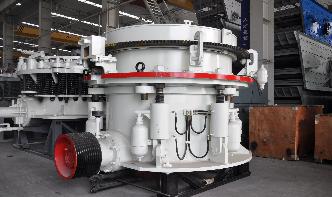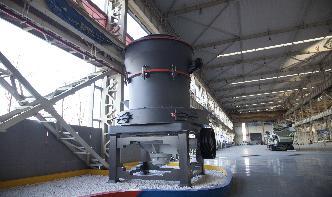
effect of granulated slag as sand replacement in concrete
Can groundgranulated blastfurnace be a partial ...
 Actually, the usual range is 60 percent replacement. It decreases permeability of concrete. There are tons of research on the effects of GGBFS as a concrete replacement. However if you ask me I like fly ash more. The range is 30 percent replacement however and make sure it is type F not C as C is volatile and vulnerable to aggregatesilica reaction.
Actually, the usual range is 60 percent replacement. It decreases permeability of concrete. There are tons of research on the effects of GGBFS as a concrete replacement. However if you ask me I like fly ash more. The range is 30 percent replacement however and make sure it is type F not C as C is volatile and vulnerable to aggregatesilica reaction.
Effect of Glass Powder on Concrete Sustainability
 transport properties of concrete which are responsible for the resistance against the penetration of external agents potentially aggressive. The effects of glass powder on the concrete properties are compared to those of other mineral admixtures such as class .
transport properties of concrete which are responsible for the resistance against the penetration of external agents potentially aggressive. The effects of glass powder on the concrete properties are compared to those of other mineral admixtures such as class .
Fly Ash, Slag, Silica Fume, and Natural Pozzolans, Chapter 3
 Fly ash, ground granulated blastfurnace slag, calcined clay, metakaolin, calcined shale, and silica fume contribute to the strength gain of concrete. However, the strength of concrete containing these materials can be higher or lower than the strength of concrete using .
Fly ash, ground granulated blastfurnace slag, calcined clay, metakaolin, calcined shale, and silica fume contribute to the strength gain of concrete. However, the strength of concrete containing these materials can be higher or lower than the strength of concrete using .
Is GGBS a good partial replacement for cement in concrete ...
 Yes GGBS is a good partial replacement for cement in concrete mix. It is used as a hydraulic binder. It improves the quality and durability of concrete. It is cheaply available as a replacement material. It provides better workability. high resistance to attack by sulphate and other chemicals.
Yes GGBS is a good partial replacement for cement in concrete mix. It is used as a hydraulic binder. It improves the quality and durability of concrete. It is cheaply available as a replacement material. It provides better workability. high resistance to attack by sulphate and other chemicals.
Influence of Slag and Slag Cement on the Strength of ...
 摘要: This study is a part of an ongoing research studying the effect of blast furnace slag as a binder and filler replacement on the properties of fresh and hardened concrete. A mix having the density of 1300kg/m3 with a proportion of (1 cement:2 sand), W/C ratio of, a commercially available additive (SP1), class F fly ash and a ...
摘要: This study is a part of an ongoing research studying the effect of blast furnace slag as a binder and filler replacement on the properties of fresh and hardened concrete. A mix having the density of 1300kg/m3 with a proportion of (1 cement:2 sand), W/C ratio of, a commercially available additive (SP1), class F fly ash and a ...
An Experimental Study on the Properties of Glass Fibre ...
 on the use of ground granulated blast furnace slag as partial replacement of is obtained from steel industry is a glassy granular material which is then dried and ground into fine powder. It increases the long term strength, durability and resistance to attack in peaty/acidic environment. From the
on the use of ground granulated blast furnace slag as partial replacement of is obtained from steel industry is a glassy granular material which is then dried and ground into fine powder. It increases the long term strength, durability and resistance to attack in peaty/acidic environment. From the
Study of Granulated Blast Furnace Slag as Fine Aggregates ...
 prepared in blast furnace without blast furnace slags. The use of granulated blast furnace slag (GBFS) aggregates in concrete by replacement of natural aggregates is very promising concept because its impact strength is quite more than natural aggregate. Steel slag aggregates are already being used as aggregates in asphalt paving road m due to
prepared in blast furnace without blast furnace slags. The use of granulated blast furnace slag (GBFS) aggregates in concrete by replacement of natural aggregates is very promising concept because its impact strength is quite more than natural aggregate. Steel slag aggregates are already being used as aggregates in asphalt paving road m due to
IJETT Performance of Concrete by Copper Slag as Partial ...
 This study reports the potential use of granulated copper slag from sterlite industries as a replacement for sand in concrete. The effect of replacing fine aggregate by copper slag on the compressive strength, split tensile strength and flexural strength of concrete are attempted in this work.
This study reports the potential use of granulated copper slag from sterlite industries as a replacement for sand in concrete. The effect of replacing fine aggregate by copper slag on the compressive strength, split tensile strength and flexural strength of concrete are attempted in this work.
Utilization of Industrial Waste Slag as Aggregate in ...
 sand by GBF crystallized slag. Tests carried out on cubes of concrete showed the effect of the substituting part of sand by granulated slag (30%, 50%) and the total substi tution on the development of compressive strength. Compressive strength test results at 3, 7, 28, 60 days and 5 months of hardening concluded that the total substitu
sand by GBF crystallized slag. Tests carried out on cubes of concrete showed the effect of the substituting part of sand by granulated slag (30%, 50%) and the total substi tution on the development of compressive strength. Compressive strength test results at 3, 7, 28, 60 days and 5 months of hardening concluded that the total substitu
Ground granulated blast furnace slag ggbs SlideShare
 May 26, 2016· Ground granulated blast furnace slag ggbs. • By use of GGBS 80% of CO2 emission can be reduced. At the same time studies have revaled use of GGBS in concrete partial replacement OPC have increased compressive strenth, tensile strenth, durability and decrese the permiability, embodied enery and cost per cubic meter.
May 26, 2016· Ground granulated blast furnace slag ggbs. • By use of GGBS 80% of CO2 emission can be reduced. At the same time studies have revaled use of GGBS in concrete partial replacement OPC have increased compressive strenth, tensile strenth, durability and decrese the permiability, embodied enery and cost per cubic meter.
Blended Cement Containing High Volume Ground Dune Sand and ...
 This paper presents the results of using ground dune sand (GDS) and ground granulated blast furnace slag (slag) as high volume cement replacement materials. In this study, plain and four blended mixtures were fabricated and cured under normal and autoclave conditions. For the blended mixtures, 40% GDS by weight of the total binder materials and different percentages of slag (15%, 30% and 45% ...
This paper presents the results of using ground dune sand (GDS) and ground granulated blast furnace slag (slag) as high volume cement replacement materials. In this study, plain and four blended mixtures were fabricated and cured under normal and autoclave conditions. For the blended mixtures, 40% GDS by weight of the total binder materials and different percentages of slag (15%, 30% and 45% ...
Application of Blast Furnace Slag Sand in Cement Concrete ...
 stone sand and granulated slag sand in the ratio of 50:50 of total fine aggregate in concrete. From this study it is observed that GBS sand and CSS blend could be used as alternative construction material for natural sand in cement concrete applications. Keywords: Cement concrete; granulated blast furnace slag sand; crushed stone sand; workability; compressive strength; alternate fine aggregate; 1.
stone sand and granulated slag sand in the ratio of 50:50 of total fine aggregate in concrete. From this study it is observed that GBS sand and CSS blend could be used as alternative construction material for natural sand in cement concrete applications. Keywords: Cement concrete; granulated blast furnace slag sand; crushed stone sand; workability; compressive strength; alternate fine aggregate; 1.
Ground Granulated Blast Furnace Slag (GGBS): Effect of ...
 Abstract: In the present investigation Ground Granulated Blast Furnace Slag (GGBS) is used as replacement to cement by weight. The GGBS is used as partial replacement for cement in the concrete mix with particles in the range of 125250µm, 90125µm, 4590µm, 2045µm and <20µm.
Abstract: In the present investigation Ground Granulated Blast Furnace Slag (GGBS) is used as replacement to cement by weight. The GGBS is used as partial replacement for cement in the concrete mix with particles in the range of 125250µm, 90125µm, 4590µm, 2045µm and <20µm.
Durability of Mortar Incorporating Ferronickel Slag ...
 Mar 26, 2018· This paper presents the strength and durability of cement mortars using 0– ferronickel slag (FNS) as replacement of natural sand and 30% fly ash or ground granulated blast furnace slag (GGBFS) as cement replacement. The maximum mortar compressive strength was achieved with 50% sand replacement by FNS. Durability was evaluated by the changes in compressive strength and .
Mar 26, 2018· This paper presents the strength and durability of cement mortars using 0– ferronickel slag (FNS) as replacement of natural sand and 30% fly ash or ground granulated blast furnace slag (GGBFS) as cement replacement. The maximum mortar compressive strength was achieved with 50% sand replacement by FNS. Durability was evaluated by the changes in compressive strength and .
Sustainable Studies on Concrete with GGBS As a .
 improvements in the concrete composites, as well as the overall economy. The present paper is an effort to quantify the strength of ground granulated blast furnace slag (GGBS) at various replacement levels and evaluate its efficiencies in concrete. Cement with GGBS replacement has emerged as .
improvements in the concrete composites, as well as the overall economy. The present paper is an effort to quantify the strength of ground granulated blast furnace slag (GGBS) at various replacement levels and evaluate its efficiencies in concrete. Cement with GGBS replacement has emerged as .
copper slag as sand replacement on hpc
 Effects of Copper Slag as Sand Replacement in Concrete Similarly copper slag is a byproduct from copper industry which can be used as a sand replacement Slag Cement Association Slag cement is a recovered byproduct of the iron manufacturing process and can be used to replace a portion of portland cement in concrete mix design.
Effects of Copper Slag as Sand Replacement in Concrete Similarly copper slag is a byproduct from copper industry which can be used as a sand replacement Slag Cement Association Slag cement is a recovered byproduct of the iron manufacturing process and can be used to replace a portion of portland cement in concrete mix design.
الوظائف ذات الصلة
- المصنعين آلة صنع الرمل في عمان
- بيع كسارة مجنزرة
- الجزائر قضبان الحديد الموردين
- محطة كسارة الحجر العلامة التجارية
- بناء الخاصة محطم خام الذهب الخاص
- مطحنة الكرة لمصنع مسحوق الرخام الجزائر السعر
- آلة تستخدم كسارة
- كسارة الفك pe900 200 السعر
- الذهب تعرية الرمال السوداء لبيع
- معدات تعدين الذهب المتنقلة
- iron ore mines pictures online free
- solutions to copper mining pollution
- mm single size aggregate loose density
- excel template for running stone quarry
- milling machine tanzania distributor
- granite processing units for sale in india
- difference between jaw crusher and secondary crusher
- wave jordan for sale
- bulb crushers manufacturers
- stone jaw crusher with conveyor belt ndash samac
معلومات عنا
واستنادا إلى استراتيجية "خدمة الترجمة"، وضعت كروشر 22 مكتبا في الخارج. إذا كان لديك أي أسئلة، يمكنك إجراء اتصالات مع مكتب قريب مباشرة. سوف كروشر نقدم لكم حلول لمشاكلك بسرعة.
Ccrusher

 WhatsApp
WhatsApp